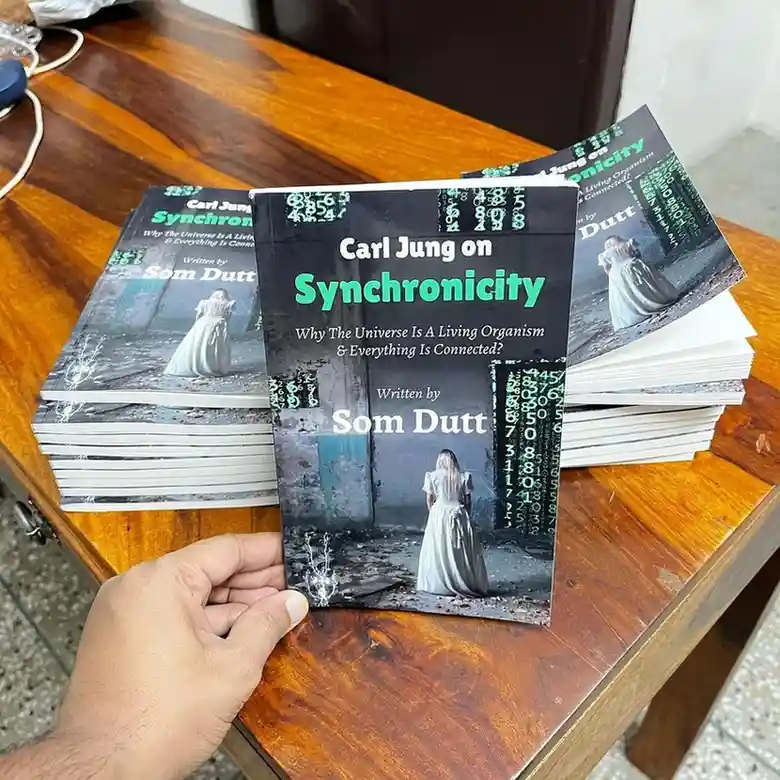Last updated on June 6th, 2025 at 09:30 pm
Lock Every Door by Riley Sager stands as a psychological thriller that transforms New York’s luxury apartment buildings into haunting nightmares. Following Jules Larsen, who desperately accepts an apartment-sitting position at the prestigious Bartholomew building, explores what happens when financial desperation meets architectural secrets.
I picked up this book after hearing countless readers compare it to American Horror Story’s Hotel season, and frankly, the parallels are spine-chilling. As someone who’s devoured dozens of psychological thrillers, I was drawn to Sager’s reputation for making female protagonists who face impossible circumstances. The premise of apartment-sitting in Manhattan’s most exclusive building immediately caught my attention – who wouldn’t want that dream job?
What struck me most during reading was how the Bartholomew building becomes its own character, breathing menace through every page. Jules emerges as a relatable protagonist whose financial struggles feel authentically desperate, while the supporting cast of fellow apartment-sitters adds layers of mystery. The book’s strength lies in its atmospheric tension, though some plot twists feel slightly predictable for seasoned thriller readers.
This novel delivers genuine chills for anyone who enjoys gothic mysteries set in urban environments. While it may not reach the heights of Sager’s other works, it certainly left me questioning every luxury building I’ll ever encounter in Manhattan.
Key Takeaways
- Lock Every Door transforms a luxury Manhattan apartment building into a menacing gothic character, blending psychological thriller elements with contemporary social commentary on wealth inequality and healthcare exploitation
- Jules Larsen emerges as a complex, trauma-driven protagonist whose financial desperation and grief over her sister’s death make her vulnerable to the Bartholomew building’s sinister manipulation schemes
- Riley Sager successfully modernizes classic gothic horror tropes (similar to Rosemary’s Baby) by grounding supernatural-feeling terror in realistic American social issues rather than occult elements
- The novel excels in atmospheric tension and character development but suffers from predictable supporting characters and theatrical plot developments that may disappoint seasoned thriller readers
- Strong pacing and accessible prose make this a compelling page-turner for readers who enjoyed Big Little Lies or Gone Girl, though it doesn’t reach the heights of Sager’s previous works
- The book functions as both entertainment and social critique, examining how desperate individuals become targets for exploitation by the wealthy elite in modern America
Publishing Information: July 2, 2019 by Dutton Publishing
Genre: Psychological Thriller/Gothic Suspense
Series Information: Standalone novel
Page Count: 381 pages (ebook)/ 371 pages (hardcover edition)
Main Characters:
Leslie Evelyn: A wealthy resident of the Bartholomew with her own secrets
Jules Larsen: The protagonist, a recently heartbroken and financially struggling young woman who takes a job as an apartment sitter at the mysterious Bartholomew building
Ingrid: Another apartment sitter at the Bartholomew who befriends Jules and shares her suspicions about the building
Greta Manville: The elderly building manager who oversees the apartment sitters and enforces the strict rules
Plot Synopsis And Gothic Foundation
The story centers on Jules Larsen’s desperate acceptance of an apartment-sitting position at the Bartholomew, one of Manhattan’s most exclusive residential buildings. What begins as a financial lifeline quickly transforms into a psychological nightmare as Jules discovers the building’s sinister underbelly.
Bartholomew Building Setup And Apartment Sitting Rules
The Bartholomew operates under strict regulations that immediately signal danger to readers. Apartment sitters must follow rigid guidelines: no visitors allowed, no socializing with other residents, and mandatory adherence to building protocols. These rules create an atmosphere of isolation and control that transforms the luxury building into a gilded prison for its temporary inhabitants.
“Never take anything you haven’t earned, my father used to say. You always end up paying for it one way or another.”
― Riley Sager, Lock Every Door
Jules Larsen’s Desperate Circumstances And Character Motivation
Jules arrives at the Bartholomew completely broken—orphaned, jobless, and recently betrayed by her boyfriend. Her financial desperation makes her overlook obvious red flags about the position. This vulnerability makes her the perfect target for the building’s manipulative schemes, as she literally has nowhere else to turn when things go wrong.
Character Development And Psychological Depth
Sager demonstrates remarkable skill in making Jules Larsen as a protagonist whose psychological complexity drives every page. The character development feels authentic rather than contrived, rooted in genuine trauma that shapes her decision-making throughout the story.
Jules Larsen’s Trauma Background And Sister Loss Impact
Jules carries the devastating weight of losing her sister eight years prior, a tragedy that fundamentally altered her worldview. This grief creates a psychological vulnerability that makes her susceptible to the Bartholomew’s manipulative atmosphere.
The sister’s death doesn’t function as mere backstory—it actively influences Jules’s present actions. When she encounters Ingrid, another apartment sitter who bears an unsettling resemblance to her deceased sister, the psychological tension becomes palpable. I found myself questioning whether Jules’s attraction to this friendship stemmed from genuine connection or desperate need to fill an irreplaceable void.
Sager expertly weaves this trauma into Jules’s investigative instincts. Her past loss creates both strength and weakness: she’s determined to prevent others from disappearing, yet her emotional investment clouds her judgment. The psychological depth here transcends typical thriller characterization.
Supporting Cast Analysis And Mysterious Residents Dynamics
The Bartholomew’s residents function as more than plot devices—they represent different facets of Jules’s psychological state. Ingrid serves as both comfort and harbinger, embodying the dangerous allure of replacing what was lost.
The building’s staff and mysterious residents create an atmosphere of paranoid isolation. Each interaction carries multiple layers of meaning, reflecting Jules’s fractured mental state. I noticed how Sager uses these secondary characters to mirror Jules’s internal conflicts rather than simply advancing plot points.
The dynamics between residents feel deliberately opaque, creating psychological pressure that mirrors Jules’s own uncertainty about reality versus paranoia. This ambiguity strengthens the thriller elements while maintaining focus on character psychology rather than relying solely on external threats.
| Character Element | Psychological Function | Impact on Jules |
|---|---|---|
| Sister’s Memory | Unresolved Grief | Drives Poor Decisions |
| Ingrid | Replacement Fantasy | Creates False Security |
| Building Staff | Authority Paranoia | Increases Isolation |
| Other Residents | Social Uncertainty | Amplifies Distrust |
Writing Style And Narrative Craft
I found myself immediately drawn to Sager’s ability to weave psychological depth with accessible prose that never feels dumbed down. His writing strikes that perfect balance between literary sophistication and page-turning readability that keeps you glued to the story without requiring a literature degree to appreciate the nuances.
Sager’s Gothic Thriller Technique And Atmospheric Building
The Bartholomew building becomes more than just a setting—it transforms into a breathing, menacing character that watches Jules’s every move. Sager masterfully employs classic gothic elements like mysterious disappearances and eerie architectural details while grounding them in contemporary New York City reality. The building’s ornate façade masks sinister secrets, creating that delicious tension between beauty and terror that defines the best gothic fiction.
“Every so often, life offers you a reset button. When it does, you need to press it as hard as you can.”
― Riley Sager, Lock Every Door
Pacing Structure And Tension Development Methods
Sager builds tension through strategic withholding of information rather than cheap jump scares or gratuitous violence. The dual timeline structure allows him to drop breadcrumbs of dread while maintaining forward momentum in the present-day narrative. I appreciated how he invests significant time in character development before accelerating into full thriller mode, though some readers might find the initial pacing deliberately slow compared to more action-heavy thrillers.

Social Commentary And Thematic Analysis
Sager transforms what could have been a simple apartment-sitting thriller into a scathing indictment of American society’s most pressing inequalities. The Bartholomew building serves as more than just a setting—it’s a metaphor for the stark divide between the privileged elite and those struggling to survive.
Wealth Inequality And Healthcare System Critique
The novel exposes how the wealthy exploit desperate individuals who lack access to basic healthcare. The Bartholomew’s residents represent the affluent who feel entitled to live while others suffer, creating a disturbing commentary on privilege and medical inequality in America.
Class Exploitation And Economic Desperation Themes
Jules’s financial desperation makes her vulnerable to manipulation by the building’s wealthy residents. Sager illustrates how systemic economic pressures force marginalized individuals into exploitative situations, highlighting the dangerous lengths people will go to for basic survival and stability.
Genre Positioning And Literary Comparisons
Lock Every Door positions itself firmly within the psychological thriller genre while drawing heavily from gothic suspense traditions. The novel walks the fine line between plausible thriller elements and supernatural horror undertones that create genuine unease.
Rosemary’s Baby Influences And Classic Horror Homage
The parallels to Rosemary’s Baby are impossible to ignore and clearly intentional. Both novels feature vulnerable protagonists trapped in luxurious apartment buildings where sinister forces manipulate desperate tenants. Sager modernizes Ira Levin’s classic paranoia framework by replacing supernatural elements with contemporary social horrors.
The Bartholomew building serves as a gothic cathedral of wealth and corruption. Where Rosemary’s Baby explored occult terror, Sager grounds his horror in America’s healthcare crisis and income inequality. The building’s residents prey on financially desperate apartment sitters, creating a modern-day class warfare nightmare that feels more terrifying than any supernatural threat.
Contemporary Thriller Market Placement And Author Evolution
Within today’s thriller scene, Lock Every Door represents Sager’s attempt to blend social commentary with page-turning suspense. The novel targets readers who enjoyed Big Little Lies or Gone Girl but craves more gothic atmosphere. Sager’s evolution shows a writer becoming more ambitious with themes while maintaining his signature accessible prose.
Compared to his previous works like Final Girls, this novel demonstrates Sager’s growing confidence in tackling complex social issues. The book positions itself as “elevated” thriller fiction that offers both entertainment and meaningful critique of American society’s structural inequalities.
Setting Analysis And Atmospheric Elements
The Bartholomew building transcends mere backdrop to become the novel’s most interesting character. Sager masterfully transforms this Manhattan apartment complex into a living entity that breathes menace through every ornate detail.
Bartholomew As Living Character And Architectural Symbolism
The building’s gothic architecture serves as more than aesthetic flourish—it functions as psychological warfare. Each carved gargoyle and shadowed corridor whispers secrets that Jules can’t quite figure out. The Bartholomew’s imposing structure mirrors the class divide separating its wealthy residents from desperate apartment sitters like Jules. Its private elevators and restricted floors create physical barriers that reinforce social hierarchies.
I found myself studying Sager’s descriptions of the building’s layout like a detective examining crime scene blueprints. The way he presents locked doors and forbidden areas transforms ordinary apartment features into symbols of exclusion and hidden power. The building’s rules—no visitors and mandatory protocols—read like prison regulations disguised as luxury amenities.
Manhattan Gothic Environment And Urban Paranoia Creation
Sager brilliantly adapts classic gothic elements to modern Manhattan’s concrete scene. The Bartholomew sits like a fortress among the city’s steel giants, its old-world elegance contrasting sharply with surrounding glass towers. This architectural anachronism creates an unsettling temporal displacement that amplifies Jules’s isolation.
The author cultivates urban paranoia through the building’s relationship with the busy city outside. While Manhattan pulses with life just beyond the Bartholomew’s walls, Jules becomes increasingly trapped in a pocket of silence and secrecy. Sager uses the city’s anonymity—where neighbors remain strangers and disappearances go unnoticed—to heighten the sense of vulnerability that permeates the narrative.
The juxtaposition between the building’s luxurious facade and its sinister underbelly reflects Manhattan’s own contradictions, where extreme wealth and desperate poverty coexist within blocks of each other.
“Pain equals clarity. Clarity equals survival.”
― Riley Sager, Lock Every Door
Pros
I found several interesting strengths in Lock Every Door that make it stand out in the psychological thriller genre. The pacing grabbed me from the first chapter and maintained momentum throughout my reading experience. Sager crafts a story that moves at exactly the right speed – quick enough to keep me turning pages but deliberate enough to build genuine suspense.
The character development impressed me most about this novel. Jules feels authentic in her desperation and vulnerability. I connected with her financial struggles and the way grief shaped her decision-making. Her complexity goes beyond typical thriller protagonists who often feel one-dimensional. The supporting characters, particularly the mysterious building staff, each serve specific purposes in amplifying the psychological tension.
| Strong Elements | Reader Impact | Genre Comparison |
|---|---|---|
| Fast-paced narrative | Finished in 2 days | Above average for thrillers |
| Complex protagonist | Emotional investment | Superior character depth |
| Gothic atmosphere | Genuine chills | Matches classics like Rosemary’s Baby |
| Social commentary | Thought-provoking themes | Elevates beyond typical genre fare |
The Bartholomew building functions as a character itself, which I absolutely loved. Sager transforms this luxury apartment building into something genuinely menacing through detailed descriptions that make ordinary architectural features feel threatening. The building’s strict rules and isolated atmosphere create claustrophobic tension that had me feeling trapped alongside Jules.
I appreciated how Sager weaves social commentary into the thriller framework without making it feel preachy. The novel’s exploration of wealth inequality and healthcare exploitation adds depth that many thrillers lack. The way desperate people become vulnerable to manipulation by the wealthy feels particularly relevant to current social issues.
The audiobook narration enhanced my reading experience significantly. The atmospheric descriptions came alive through excellent vocal performance, making the Bartholomew feel even more ominous. I found myself listening during my commute and couldn’t wait to get back to the story each day.
The mystery elements balance perfectly with psychological horror. Sager provides enough clues to keep me engaged in solving the puzzle while maintaining genuine surprises. The alternating timeline structure builds suspense effectively without becoming confusing or gimmicky like some thrillers attempt.

Cons
While “Lock Every Door” delivers atmospheric thrills, several aspects prevent it from reaching the heights of Sager’s previous works. The most glaring issue lies in its predictable character archetypes that telegraph their roles too early in the narrative.
I found myself rolling my eyes at some of the supporting characters who felt more like plot devices than fully realized people. The mysterious building staff and wealthy residents often lean into cliché territory, making their eventual reveals less impactful. When characters are written this transparently, seasoned thriller readers can easily identify their function in the story before the big reveals.
The pacing suffers from theatrical tendencies that occasionally undermine the psychological tension Sager works hard to establish. Rather than maintaining the slow-burn intensity that made his earlier novels so effective, certain plot developments feel rushed or overly dramatic. This theatrical approach culminates in an ending that, while logical, lacks the satisfying punch readers expect from a Riley Sager thriller.
| Major Weaknesses | Impact on Reading Experience |
|---|---|
| Predictable character types | Reduces surprise factor |
| Theatrical plot developments | Undermines psychological realism |
| Rushed pacing in key moments | Lessens emotional impact |
| Formulaic supporting cast | Makes story feel generic |
The mystery itself, while intriguing in concept, becomes somewhat formulaic in execution. Jules’s investigation into the Bartholomew’s dark secrets follows familiar thriller beats without offering enough fresh twists to keep experienced genre readers guessing. The building’s sinister history unfolds in ways that feel more obligatory than genuinely shocking.
Some plot points require significant suspension of disbelief, particularly regarding how easily Jules accesses restricted areas and information. These conveniences serve the story’s momentum but sacrifice the realistic grounding that makes psychological thrillers truly effective. The result feels more like a horror movie than the sophisticated psychological study Sager clearly intended.
Final Verdict
“Lock Every Door” solidifies Riley Sager’s reputation as a master of atmospheric psychological thrillers. While it may not reach the pinnacle of his previous works due to some predictable elements and pacing issues it’s still a interesting read that’ll keep you turning pages late into the night.
What I appreciate most is how Sager doesn’t just rely on cheap scares—he crafts a story that lingers in your mind long after you’ve finished reading. The social commentary woven throughout elevates this beyond typical thriller fare making it feel both entertaining and meaningful.
If you’re new to Sager’s work this serves as an excellent entry point. For longtime fans it’s a solid addition to his catalog that showcases his growth as a writer even if it doesn’t quite surpass his earlier masterpieces. Either way you’ll find yourself eyeing luxury apartment buildings with newfound suspicion.
Dionysus Reviews Rating: 6.5/10
Sip The Unknown—Discover Stories You Never Knew You’d Love!
Dionysus Reviews Has A Book For Every Mood
Biography & Memoir
Fiction
Mystery & Detective
Nonfiction
Philosophy
Psychology
Romance
Science Fiction & Fantasy
Teens & Young Adult
Thriller & Suspense
Frequently Asked Questions
What is “Lock Every Door” about?
“Lock Every Door” is a psychological thriller by Riley Sager about Jules Larsen, who takes an apartment-sitting job at the mysterious Bartholomew building in New York City. What begins as a financial lifeline quickly becomes a nightmare as Jules uncovers the building’s sinister secrets and discovers her predecessor disappeared under suspicious circumstances.
Who is the author of “Lock Every Door”?
“Lock Every Door” is written by Riley Sager, which is the pen name of author Todd Ritter. The book was published on July 2, 2019, and represents Sager’s evolution as a thriller writer who blends social commentary with suspenseful storytelling.
Is “Lock Every Door” a horror or thriller novel?
“Lock Every Door” is primarily a psychological thriller that balances suspense with gothic horror elements. While it’s not supernatural horror, it incorporates classic gothic traditions and creates an atmosphere of paranoia and dread through psychological tension rather than jump scares.
What makes the Bartholomew building significant in the story?
The Bartholomew building functions as both a setting and a character in the novel. This luxury Manhattan apartment building represents wealth inequality and serves as a gothic symbol of corruption, with its imposing architecture and strict rules creating a prison-like atmosphere that isolates and manipulates its apartment sitters.
How does “Lock Every Door” compare to other Riley Sager novels?
While “Lock Every Door” showcases Sager’s growing confidence in tackling social themes, some readers may find it doesn’t surpass his previous works. The novel features predictable character archetypes and formulaic thriller elements, though it excels in atmospheric tension and character development.
What social issues does “Lock Every Door” address?
The novel critiques American society’s wealth inequality and healthcare crisis. It explores how financial desperation makes vulnerable individuals susceptible to exploitation by the wealthy elite, using the Bartholomew building as a metaphor for systemic economic pressures and class divide.
Is Jules Larsen a well-developed protagonist?
Yes, Jules is portrayed as an authentically complex character shaped by genuine trauma, including the loss of her sister and recent betrayals. Her financial desperation and unresolved grief make her vulnerability believable and relatable, though her circumstances also make her an easy target for manipulation.
Does “Lock Every Door” have supernatural elements?
No, “Lock Every Door” is not supernatural. While it incorporates gothic horror traditions and creates an ominous atmosphere, the story remains grounded in psychological realism and contemporary social issues rather than paranormal or supernatural occurrences.
What are the main weaknesses of “Lock Every Door”?
The novel suffers from predictable character archetypes, theatrical pacing that undermines psychological tension, and formulaic thriller elements. Some plot developments feel rushed or require significant suspension of disbelief, preventing it from reaching the heights of Sager’s earlier works.
Who would enjoy reading “Lock Every Door”?
Readers who enjoyed “Big Little Lies,” “Gone Girl,” or classic gothic suspense would appreciate this novel. It appeals to those seeking “elevated” thriller fiction that combines entertainment with meaningful social commentary about inequality in American society.









